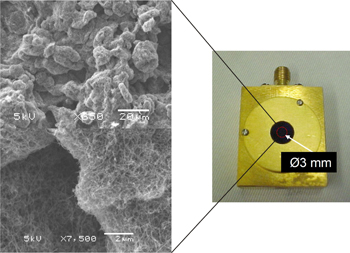| * |
|
Laser Radiometry
Summary:Accurate characterization of optoelectronic equipment is important to applications such as optical telecommunications, medical devices, materials processing, photolithography, as well as laser safety. This project focuses on metrology of selected critical laser parameters, especially the calibration of optical-fiber power meters and power meters of commonly used lasers. Project staff participate in national and international standards committees for laser safety and optoelectronic devices. They extend and improve source and detector characterizations, including development of low-noise, spectrally flat, highly uniform pyroelectric detectors; high-accuracy transfer standards for optical-fiber and laser power measurements; and advanced laser systems for laser power and energy measurements. Description:Meeting the needs of the laser and optoelectronics industries and anticipating emerging technologies requires investigation and development of improved measurement methods and instrumentation for high-accuracy laser metrology over a wide range of powers, energies, and wavelengths. NIST has historically used electrically calibrated laser calorimeters to provide traceability to the SI units for laser power and energy. We also have developed measurement capabilities based on a Laser Optimized Cryogenic Radiometer, which provides an order of magnitude in accuracy improvement for laser power measurements, compared to electrically calibrated radiometers. Major Accomplishments:
|
 Photograph (right) and scanning electron microscope images (left) of a thin-film pyroelectric detector coated with multi-walled carbon nanotubes. Start Date:January 1, 1993End Date:ongoingLead Organizational Unit:pmlCustomers/Contributors/Collaborators:Richard Ahrenkiel, Colorado School of Mines Staff:Contact
John Lehman Mail Stop 815.01 |
